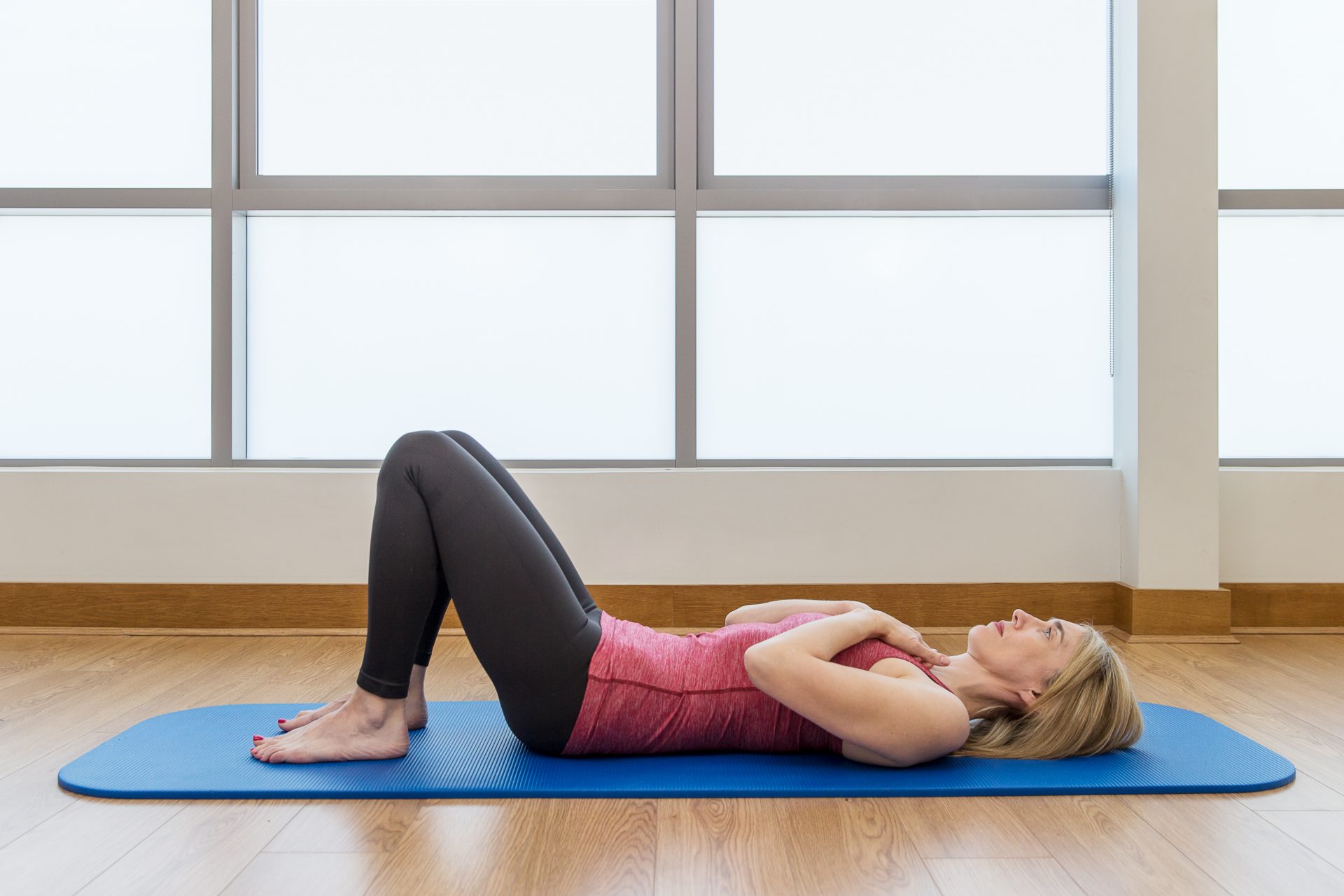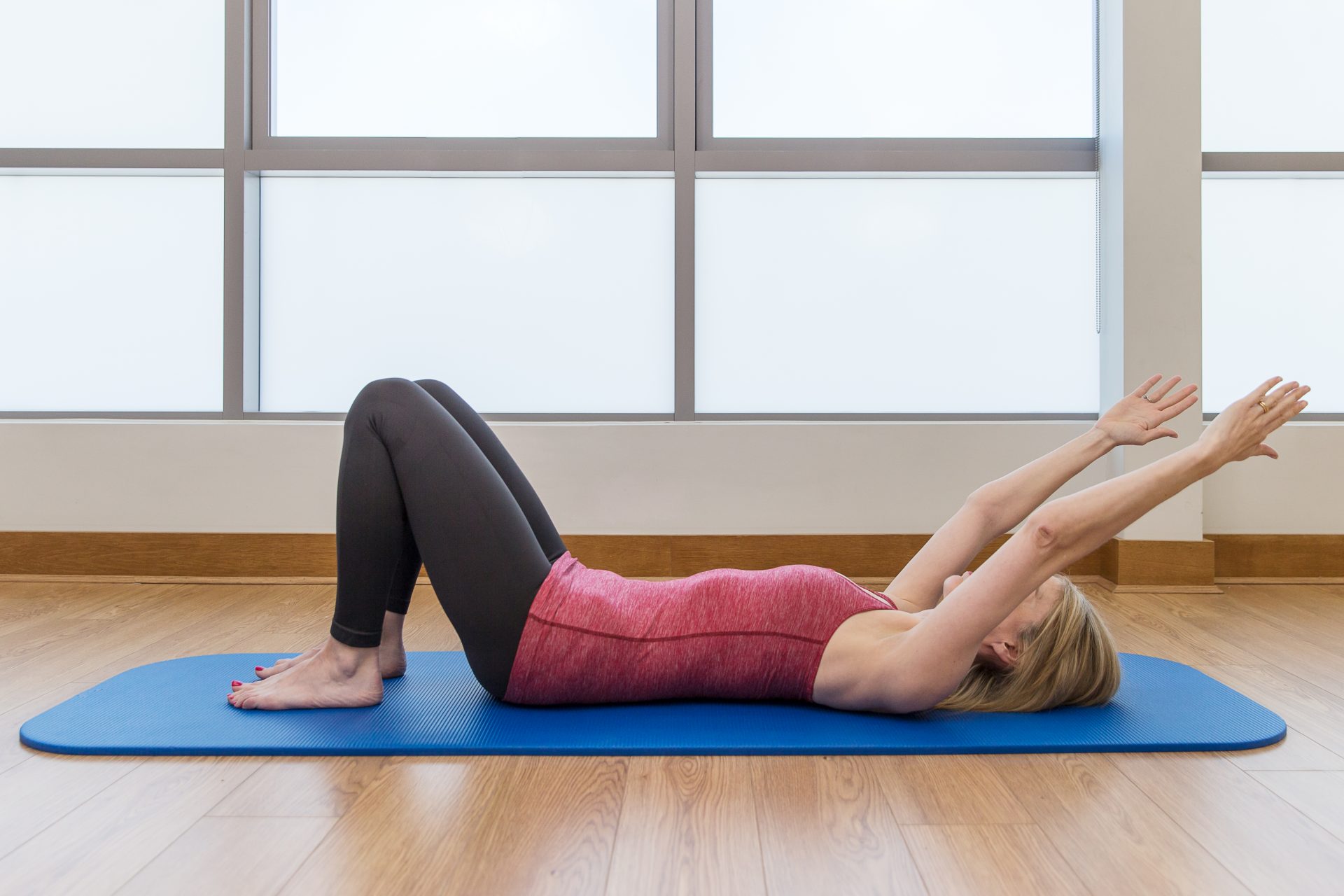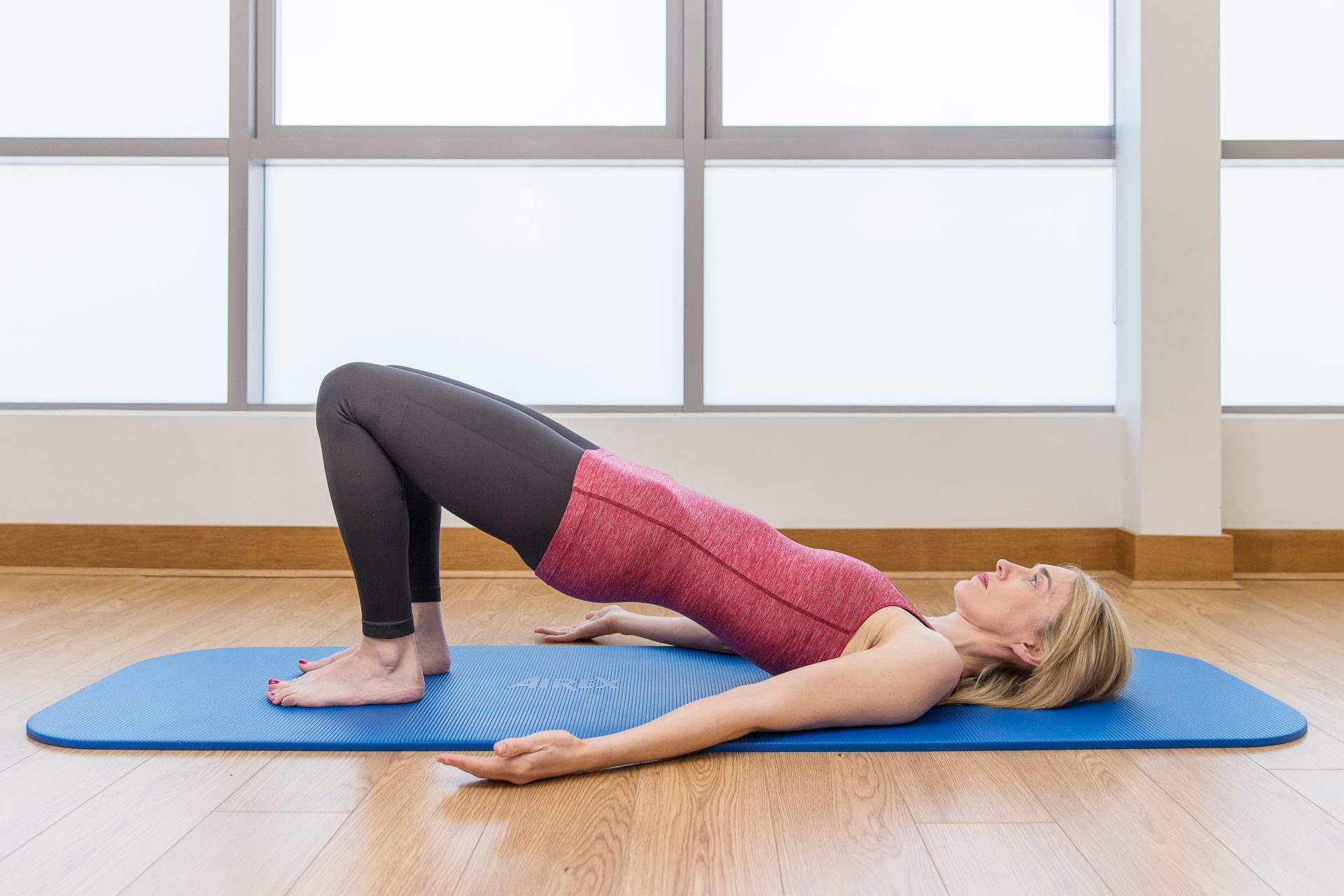Tired of having backache every day? Then the last thing you should do is try to strengthen your back in an intense gym class. Instead, try this expert-backed 10-minute sequence that’s been designed to mobilise, lubricate and relax the body.
When was the last time that your back felt genuinely good, free from niggles, lower-back pain or sciatica? Many of us who work at desks all day or who have been hammering away at kitchen tables for the past few years are living with backs that feel ancient.
The ridiculous thing about back pain is that it can creep up on you even if you’re strong and fit. You can do all the renegade rows you like – if you’re aching from your 9-5, the chances are that pain will creep back in as soon as you sit back down at your desk. So, what can we actually do to get to the nub of the pain? Not everyone has the time or resources to go to a chiropractor or osteopath for weeks on end, which is why we’ve gone to movement therapist Jeannie Di Bon for help.
You may also like
Back pain: 3 pilates moves to alleviate back aches
Di Bon is a chronic pain survivor herself and specialises in lower-back pain management (amongst other things). Her motto? Movement heals. With that in mind, she’s put together a six-step exercise programme for reducing pain, strengthening the back and allowing us to move, sit and work twinge-free.
Why do so many of us have back pain?
The Royal College of General Practitioners estimates that around one-third of the UK adult population is impacted by back pain every year – so clearly, it’s not just working from home that’s causing the problem. “The reasons for back pain can be varied,” says Di Bon. The good news is that in most cases “the pain is not indicative of something serious – although of course any prolonged pain should be investigated.Most cases of back pain come down to lifestyle.”
She goes on to acknowledge that instances of back pain have increased during the pandemic and that’s largely down to the fact that many of us move less when we work from home. As well as the rubbish home office situation, we’re no longer commuting, walking to the communal kitchen, going up and down stairs to and from reception, or heading out at lunchtime for a sandwich. “If you are used to walking to work, moving around the office or going out for lunch, you are lubricating your tissues during the day,” Di Bon confirms.
“Motion is lotion – the body loves to move. But if we sit for many hours without the opportunity to move around or stretch regularly, the tissue becomes dehydrated. This dehydration causes tissues to stick together and makes us feel stiff.” Prolonged stiffness could lead to pain.
You may also like
Physical signs you’re sitting at your desk wrong, and what to do about it
But it’s not just sitting still that’s causing us pain. Chronic stress can also be responsible for backache because when we’re stressed, muscular tension can build up in the tissues which then starts to impact the nervous system.
Di Bon explains: “Psychological and emotional factors cannot be ruled out when dealing with back pain.The stress of worrying about the back pain will cause a vicious cycle of pain – ‘The more I worry, the more pain I have, the less I want to move.The less I move, the more pain I will have’.” Sound familiar?
What about sciatica?
Sciatica is a slightly different issue. While back pain tends to be centralised, sciatica can see pain radiating down one leg, making it really hard to sleep on a certain side (to name but one inconvenience).
It’s caused by the pinching of the sciatic nerve, which branches out from the lower back down through the hips and bum, and down each leg. It’s caused by a herniated disc or spinal stenosis (narrowing of the spine) which then compresses the nerves. Di Bon says that again, sitting for long periods can make it worse because when you sit, the nerve gets even more squished.
Can you work towards living pain-free if you have back pain?
As with anything, it’s a process and step one, Di Bon says, is assessing your lifestyle. What’s contributing to your back pain? Do you have a lot of physical or emotional stress going on right now?
Once you’ve answered those questions, you can start developing a daily movement practice that’s going to help keep those tissues happy. Intense workouts might make the matter worse so rather than jumping into a strength session with loads of back work and deadlifts in it, give the following programme a shot.
“The movements are designed to soften and release tension from the body and mind while working on alignment and stability,” Di Bon explains. “It’s very important that we don’t force the body or push too hard,” she says, going on to stress that this sequence is about listening to your body and creating “a sense of safety”. Without that feeling of security, the brain stays on high alert and pain persists. Relaxing, feeling OK with how you’re moving and taking things slowly are the key things to remember here.
Right, on with the exercises!
How to exercise for back pain
Breathe
Di Bon says that any pain-reducing programmes should start with a five-minute breath awareness practice. “If you’ve been in pain for weeks, months or even years, the body is likely to be tense and anticipating pain.” Breathwork can start to undo that.
- Lie in a comfortable position on the floor
- Allow gravity to gently draw the body to settle into the floor, creating a sense of safety and release
- Feel the bones releasing and the muscles relaxing as you exhale, and allow yourself to recognise where you are holding tension in the body
Pelvic rolls
“A very soft, gentle rolling of the pelvis forward and back can help to mobilise tight lower back muscles,” says Di Bon. “This can be very small – try to use the least amount of muscular effort to move the pelvis.”
- Stay lying on your back, with knees bent and the soles of your feet on the floor
- Keeping a neutral position (with a little gap between your lower back and the mat), exhale and gently rock your hips towards your head – feeling your lower back press into the floor
- Stay for a couple of breaths, then inhale and rock back to the starting position
- If this is painful, shorten the range of movement.

Supine hip rotation
“If you have been sitting at a desk for many hours, the lumbar tissue can become fixed and rigid. We need to add some compensatory movement into your body – allowing the pelvis to gentle roll from side to side.”
- Lying on your back, bend your knees and then bring your left foot over your right knee
- Bring the right knee to the floor, keeping that left foot where it is
- Take a few breaths then come back through centre, swap legs and bring the left knee to the floor
Supine arm rolls
It might seem random to have an arm exercise in a back sequence but Di Bon says that moving the arms is crucial to reducing backpain. “The arms play an important role in the function of the lower back,” she explains.
If you notice during this exercise that you arch your back when moving your arms, Di Bon warns that it’s a pattern probably being played out in your daily life too. “The low back can become irritated and overused as it lacks trunk stability.In this supportive exercise, learn to move the arms without the back arching and keeping the ribcage soft and heavy.This may mean you need to initially reduce your range of movement to find stability.”
- On your back, extend your arms towards the ceiling, palms facing each other
- Keeping them straight, extend them back behind your head and circle out by your sides and down to the hips
- Circle them back up
- Once you’ve done a few that way, reverse the pattern

Supine knee rolls
This move, Di Bon says, is great for finding lumbar stability. “This exercise is very important to help improve our walking.”
- Lying on your back and keeping the pelvis and ribcage heavy, lift one leg off the ground while keeping the knee bent
- Bring back down and lift the other leg off the ground (kind of like you’re marching on the spot)
- You want to ensure that the pelvis doesn’t rock from side to side and that the back doesn’t arch
Bridge
“Spinal mobility and fluidity is essential for a healthy spine without pain. The bridge allows articulation of the spine, but it is important we do not squeeze or push our pelvic up into the air.”
- Lying on your back, bend your knees and extend your arms along your sides – palms pressed into the floor
- Digging into your hands and heels, lift your hips off the ground
- Stay up for a few breaths then slowly roll your spine back down

For more mobility support, check out our range of 15-minute mobility videos.
Images: Getty/Jeannie Di Bon
Source: Read Full Article
